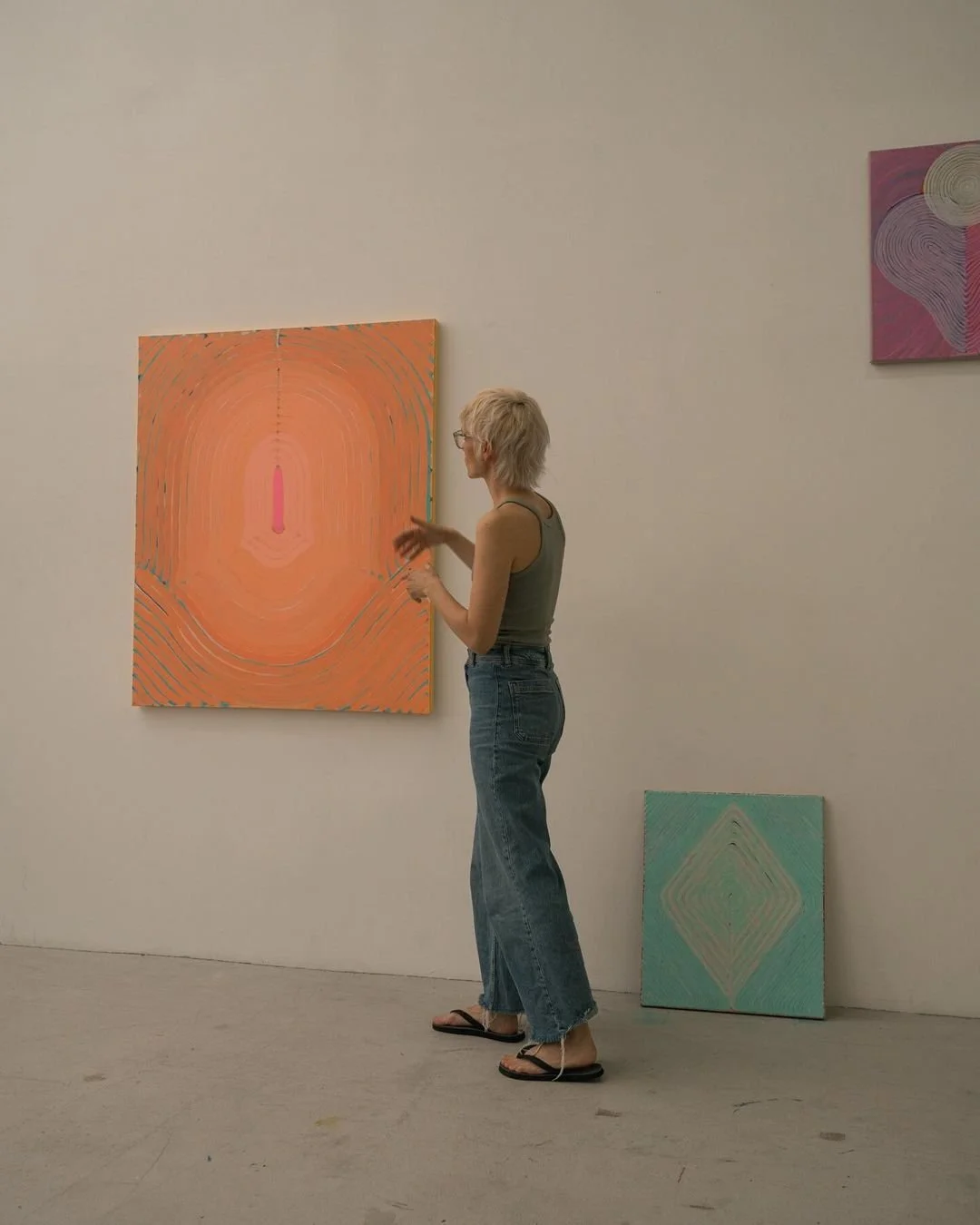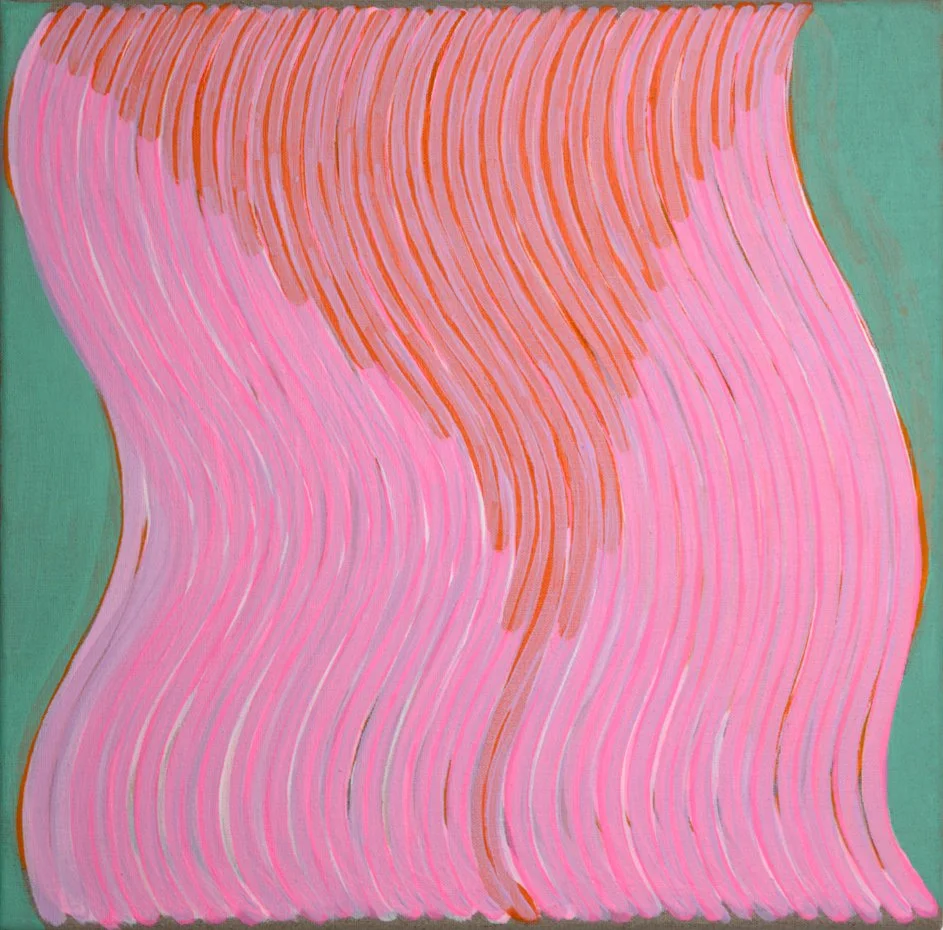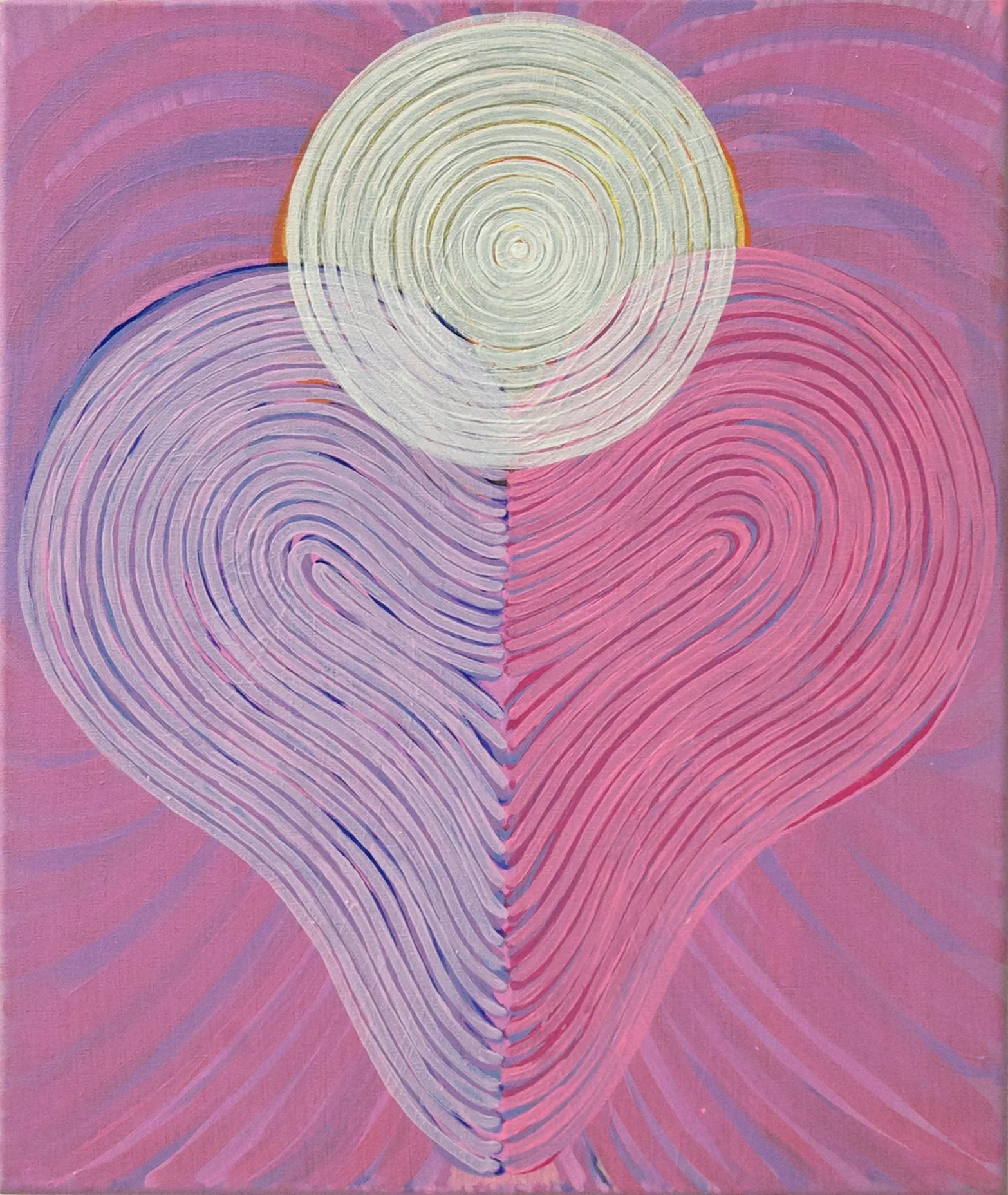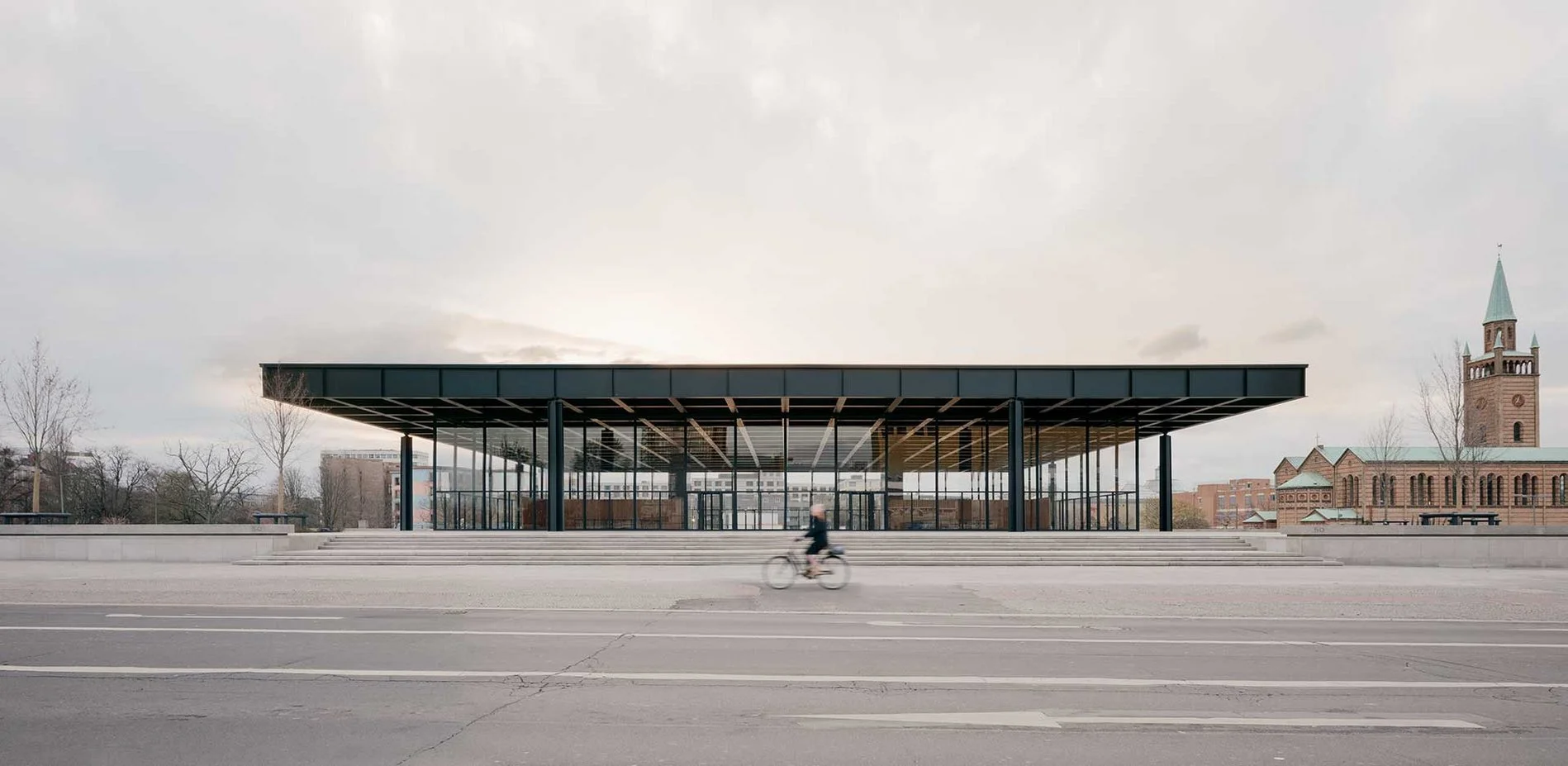Sina Marie Schons @within.a.heartbeat
INNER ARCHITECTURES:
COLOGNE ARTIST CAROLINE STRECK IN DEFIANCE OF PATRIARCHAL STRUCTURE
WRITTEN BY Naomi Lo
06.16.2024
Caroline is a German artist, lives and works in Cologne. Her artistry comes from a feminist mindset that seeks moments of vulnerability as well as bodily-spacial connections. As a defiance of patriarchal structure and its behavioural norms, she calls her works “Inner Architectures”, characterised by geometrical lines and forms, while rendered in imperceptible hues of warm tones. Coincidingly, Caroline works on sprawling installations and public art.
PART I REPETITION AND FORMS
Naomi: Can you give us 3 words to describe your art.
Caroline: Delicious, delicate, lustful.
Naomi: What has drawn you to geometry and linear forms?
Caroline: In the very beginning, my painterly outcome was influenced by the (hu)man-built surroundings I kept seeing everyday. I worked with windows, balustrades and fences, those are elements of German architecture during the 50s and 60s. In time, I developed a relatively care-free style incorporating rhythms and patterns, however still referring to architectural fragments. These changes happened when I was living abroad in Istanbul for one year. And the fact I was enamoured by the sunlight and the colours there that eventually brought so much impact in my work of art. Now I create lines and forms that derive from my personal experience from everyday living environments.
Naomi: How does your MFA, in your opinion, cultivate an artist’s creative process and its research?
Caroline: The MFA has an interdisciplinary orientation which I thought is great as it encouraged me to try out other mediums like installations and performance. The tutors really encouraged us to work from our own experience. Additionally, it was when I first learned about feminist theories and the female gaze. The course was very intense and helped me to build a lasting workflow. Further, there were many students across the globe that gave us the opportunity to build a cross-cultural network.
Ice Palace, oil on canvas, 2016
PART II INNER ARCHITECTURES
Naomi: Describe your working process, "Inner Architectures". What is it about and how is it executed?
Caroline: I usually start with a geometric shape inspired by the architecture around me. During the process, I begin setting in relation to body rhythms and emotions. In this painting, forms are de-stabilized and re-stabilized as a result of a painterly construction; executed freehand without precise measurements. My art strives to give room to moments of failure and non-linear thinking, while “Inner Architectures” is a specific technique of layering lines that I’ve developed over the years, contextualised from concrete structure. In a sense, I feel as if I'm taking possession of the forms, and simultaneously, the notion coincides with my own interpretation of construction from a feminist lens.
Lush! (Baby Steps) , acrylic on canvas, 2024,
Nimbus Through the Backdoor, acrylic on canvas, 2024
Naomi: German architecture is known for its nearly unburnished concrete structure, for example, Brutalist design has been having its moment. Though, it is so often perceived by the public as cold and alienating. How are these uniformed objects associated with your art?
Caroline: The description is true for the cities but not so much for the towns. I mean German architecture can have its picturesque and bourgeoisie image. I experienced both as I come from a small town in West Rhineland, as well as lived in cities like Cologne, Saarbrücken, London and Istanbul. I would say my early works resemble a lot more to a specific architectural style than my recent works. I believe oftentimes we get subconsciously influenced by our built surroundings in the way we move, act or feel. I have always been interested in functional forms that shape our everyday lives, they lead our ways and create space we spend our life in. Further, buildings are predominantly built by men and so is the patriarchal capitalist system we live in. This is what mainly challenges my perspective.
Naomi: How do you define Cologne, the magnificent city you are currently based in?
Caroline: Despite the funny nickname of the city as “Cöllefornia” (California) of Germany, owing to the city’s carnival tradition and open-minded residents, the cityscape in Cologne is dominated by pre-war times architecture together with buildings from the 50s and 60s. They were quickly reconstructed after demolition during warring states. But other than that, you will also find modern crane buildings near the Rhine River, also there are decayed industrial sites on the right side of the Rhine. People have had loathing about Cologne but I think that cities’ architecture is the witness of its own history. Plus, I am not a fan of the idea to rebuild architecture of ancient times such as Frankfurter Altstadt or the Berlin Castle.
PART III PUBLIC ART
Naomi: Tell us about your first public art creation and the perks you have had.
Caroline: I had my first opportunity to work in public in London after I graduated from college. I made a mural by the Regent's Canal in St. Pancras and two other murals at Peer Gallery. In 2021, I had another opportunity to execute a work in public at a former military area in Hombroich, Neuss, which I enjoyed very much as it changed the vibe of the place during that period of time. I'd like to continue to work in public in the future as part of my practice.
Multiple Verspannung, installation view, 2021, artist courtesy
Murals at Peer Gallery, London, 2017, artist courtesy
Naomi: There were times where you mount up art pieces in unconventional areas, from deserted military guard house to a group exhibition displayed against the sweeping view of a crop field. Could you tell us a bit more?
Caroline: Whenever I have the chance I like to work in public spaces or non-institutional contexts. I like the idea of reaching an audience who randomly passes by than those who consciously go to a museum or gallery. Art in unconventional places speaks to a broader audience and hence creates a more accessible contact with art in general. The exhibition on the fields was organised by Berlin artist Jana Jedermann (@jana_jedermann) during the pandemic. I thought it was a great way to work around the situation of closed institutions and create a public way of display in the country.
Naomi: If you can pick any destinations in the world to showcase your murals, where would it be and why?
Caroline: Actually London again, as it is just full of amazing wall works everywhere and of course New York as another metropolis of street art.
No Land Mann, acrylic and turmeric on linen, 2021, artist courtesy
Naomi: Favourite artsy spot in Germany?
Caroline: The Kolumba Museum in Cologne, which is built around St. Kolumba. Also, Neue Nationalgalerie in Berlin which was built in 1968 by Mies van der Rohe, I love it for its open and airy architecture.
The Kolumba museum, Cologne, online source
Neue Nationalgalerie, Berlin, online source










